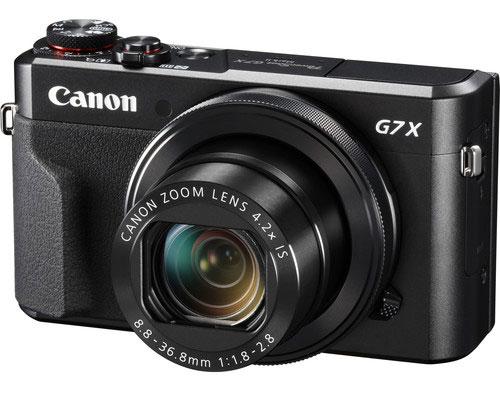
We were first to tell you that Canon will now use 1″ DPAF sensor in its upcoming compact camera. Now, we have leaked specification of the upcoming Canon G7X Mark III camera. According to the leaked specification, the upcoming compact will have 1″ 24 Megapixel Dual Pixel CMOS AF Sensor. The Continuous shooting speed of the camera is rumored to be 10FPS. Earlier the burst speed of Canon G7X Mark II was limited upto 8fps, so its a decent improvement compared to the predecessor.
Canon G7X Mark III Rumored Specification
- 24.1mp 1″ CMOS sensor
- 10fps
- DIGIC 8
- 24-100mm f/1.8-f/2.8 Lens (4.2x Optical Zoom)
- 3″ Articulating Touchscreen
- 4K Video at 30fps
- 1080p Video at 60fps
- Built in Wi-Fi, NFC & GPS
- Announcement: 2018
- No mention about DPAF for 4K video.
Canon G7X Mark II With Limited 4K
One of the most important feature, Canon G7X Mark III is rumored to be the first Canon compact camera to feature 4K videos. But at the same time sources also say that 4K mode may not get the DPAF support. Well, we have a logical approach to justify this rumor. That, G7X Mark III camera will not going to have DPAF in video because, Canon want to save some features for Canon G5X Mark II camera. A high-end model which sits above the G7X series. As they have done with EOS M50 Mirrorless camera to save if the sales of EOS M5 Mark II (to be announced Pro APS-C Mirrorless camera).
Well the lens of the camera is expected to remain same as of its predecessor, and one of the major improvement we will see is the introuction of 3″ articulating touch screen, G7X Mark II was having tilting touch display screen, which was a bit problematic thing for Vloggers. The announcement time of camera isn’t know, sources suggest that the announcement is about to happen in 2018. Possibly, Canon may pick up the Photokina 2018 event to introduce the cinematic pro compact camera for Vloggers as well as Pro-shotters.
Also see – Canon EOS Cinema DSLR Coming Ahead of Photokina 2018 | Canon Registered FullFrame Mirrorless, DSLRs and Compacts
Subscribe to FACEBOOK | TWITTER | GOOGLE+ to get live news + Canon rumors 24X7







I am owner of Canon G7X Mark II camera and I actually don’t need 4K inside the camera.. since our system .. internet around the globe isn’t ready for 4K. Most of the people still view videos in 480p resolution instead of selecting HD..
The only thing I need is fast AF system.. of Canon introduces DPAF with G7X Mark III. I will get one for sure.
4k without DPAF = we want sell you CRAP like in M50 !!!
Better is wait for new RX 100 VI – Sony always put everything they can.
I hope they focus on practical, on the go, usability for this pocketable camera. Many of us buy these cameras for street photography and for capturing and sharing moments/events on the spot. Ever more frequently, my workflow requires being able to do everything while I am out, being the first to share a great photo of something. Often, if my goal is for people to see the photo, waiting until I can get to a laptop is a luxury, the moment has passed.
In many ways, the Sony RX100 series has increasingly gone down a road of chasing features I don’t care about at the expense of those I do (especially zoom and user interface). The G7X series has been a better match for me.
For me, a key (and inexplicably missing in the G7X and mark II) feature that must be included is wireless transmission of raw photos (not just jpeg). The Sony RX100s have had options to do this for a couple models now. I don’t see the point of buying the new model if they leave this feature out again – I’d happy buy the camera with the same specs as the Mark II if it also had this.
Using Mobile Lightroom, we can shoot raw photos with iPhone and Android phone models that go back a few years. Frequently, I am doing that instead of using the camera in my pocket because often the phone camera raw is better than the jpeg I can get wirelessly off the camera. While the raw photo on my camera will blow away the phone raw, having to use cables (and worse, the interfaces) to copy raw photos to an iPhone or Android phone while out is often too time consuming and unworkable for the situation. With wireless, you pick the photo and transmit (even if raw takes much longer than jpeg) – it is a fraction of the effort.